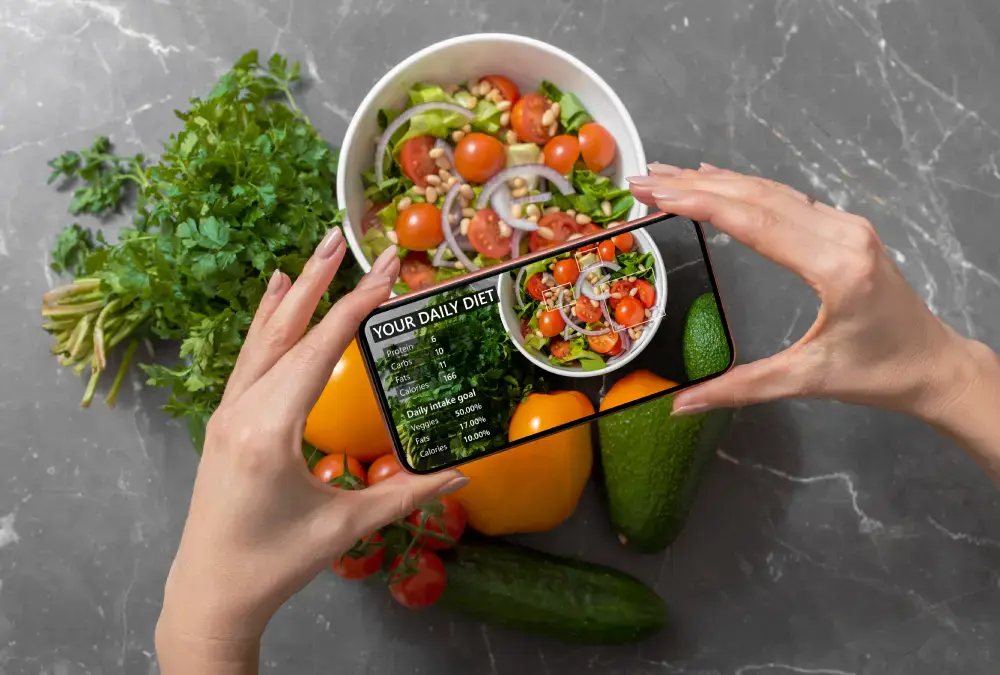
It’s not magic. It’s machine learning. The culinary world is experiencing a wild transformation, where artificial intelligence is not just assisting food scientists but rather shaping the future of taste itself. In a time when consumer demand is moving faster than the shelf life of dairy, AI is giving the food industry a brain boost by helping teams make smarter predictions, rapid-fire prototypes, and informed ingredient decisions with jaw-dropping speed and accuracy.
What does this all mean for product developers, chefs, and brands? It means less guessing and more guided creativity. From analyzing customer preferences and global market trends to refining sustainability goals and reducing food loss and waste, AI-driven tools are becoming the secret ingredient in cutting-edge flavor development.
Buckle up, because we’re diving into a world where data, sensors, and algorithms team up with the culinary arts to reinvent how we taste, test, and tell our stories one byte at a time.
What Is AI? What Is Its Role in Food Science Innovation?
Artificial intelligence refers to the use of computer programs and machine learning algorithms to perform tasks that typically require human intelligence like prediction, pattern recognition, and even a touch of creativity.
In food science, AI has become the ultimate sidekick by helping navigate massive amounts of data, identify new ingredient combinations, reduce bias in flavor selection, and unlock insights based on consumer behavior, psychology, and even physiology.
AI tools like deep learning neural networks and natural language processing have made it possible to assess taste perception, map out flavor compounds, and even predict how a chocolate bar might make a person feel based on their emotions, memory, or culture. Thanks to AI, flavorists and scientists can focus more on innovation and less on endless iterations because the machine does the heavy lifting behind the scenes.
The Role Of AI In Accelerating Flavor Creation
Back in the day, developing a new beverage or snack flavor involved guesswork, time-consuming experiments, and countless taste tests. But now, AI’s got the playbook and it’s full of smart recipes, predictive analytics, and chemical breakdowns. By integrating generative artificial intelligence with traditional food science, teams can speed up new product development by months.
With tools like generative adversarial networks, AI can simulate chemical compounds, generate never-before-seen flavor profiles, and help brands predict what ingredient combinations are most likely to excite their target market. This technology is like having a flavor DJ remixing your greatest hits and dropping new ones before the competition even knows what’s coming.
Predictive Modeling For Flavor Pairings

The next time you bite into a vanilla-lavender marshmallow and think, “This is genius,” there’s a chance AI had a hand in it. Predictive modeling uses statistics, computer science, and data analysis to explore which flavorings are most compatible based on molecular structure, taste receptor activation, and consumer insights gathered from around the globe.
These AI-powered models examine how chemical compounds interact, how they’re perceived on the tongue, and even how they behave once they hit the gustatory cortex (aka the brain region responsible for interpreting taste).
With massive databases, AI can consider thousands of possible flavor combinations in seconds, narrowing down the best pairings that balance umami, sweetness, sourness, salt, and bitterness.
Streamlining Formulation From Idea To Prototype
Once the data analysis identifies a promising flavor combination, AI can suggest ingredient ratios, optimize for mouthfeel, and even account for shelf life or environmentally friendly processing needs. That’s powerful fuel for product development and manufacturing teams working under tight timelines.
Using AI, teams can run predictive tests on formulation stability, taste, and texture before anything hits the cook line. These simulations dramatically reduce sampling waste, accelerate time to market, and reduce trial-and-error costs. It’s like test-driving a flavor before buying the ingredients.
Smart Ingredient Substitutions With AI
Let’s say your supplier ran out of a critical crop or your new nutrition standard requires removing an allergen. No problem — AI can analyze ingredient databases and propose smart substitutions based on taste, chemical structure, function, and performance. The algorithm takes into account consumer preferences, health goals, and even flavor balance to keep your product intact.
This capability is especially useful in reducing reliance on unsustainable or animal-based products. Swapping out meat, dairy, or high-sodium elements for plant-based alternatives can be done in a way that preserves mouthfeel and taste perception.
Enhancing Natural Flavor Discovery
There’s a growing consumer demand for natural, clean-label flavors, but hunting down the next botanical superstar isn’t as simple as sniffing around the spice rack. Enter artificial intelligence. With tools like mass spectrometry, chromatography, and AI-driven chemical compound analysis, researchers can uncover flavorings hidden in underexplored plants, fruits, and even fermentation byproducts.
By examining how taste receptors, sensors, and aromas interact in the brain, AI can identify new flavor pathways that human palates may not have considered. This opens the door to completely novel beverage, snack, or protein options with exotic profiles, enhanced nutrition, and naturally derived sweetness or umami. It’s a massive leap in food science and a win for sustainability, agriculture, and the planet.
Improving Consistency And Customization In Flavors
Consistency is king in manufacturing, but so is personalization. Seems like a flavor paradox? Not with AI in the mix. Using real-time analytics, food companies can control flavor quality batch after batch.
On the flip side, AI’s ability to digest consumer insights, feedback, and behavior patterns allows teams to design hyper-personalized flavor experiences. Love the taste of smoky meat but prefer a plant-based option? AI can develop a flavor built to mimic your preferences down to the molecule.
Advancing Food Safety Through AI Innovation

Contaminants, spoilage, and inconsistent manufacturing processes can cause major issues for brands, but AI-powered prediction tools help stop problems before they start. With neural network analysis of temperature, humidity, and other data in the food system, AI can flag anomalies faster than any human could blink.
Even more futuristic? AI-driven computer vision can visually inspect food for contamination, while augmented reality tools guide staff through food safety training and evaluation protocols. This makes it easier to uphold regulatory standards, protect consumer health, and boost transparency across the supply chain. AI is also key in traceability, helping reduce food loss and waste through smart inventory and storage decisions.
Discover New Flavor Trends with NuSpice
Here’s where things get extra exciting. At NuSpice, we’re not just watching the future of flavor — we’re building it. Our R&D food experts harness the power of AI, machine learning, and consumer insights to develop flavor concepts that lead the market. We combine data analysis with real-world culinary experience, helping you go from bright ideas to crave-worthy products with precision and speed.
Want to launch a new snack, shake up your menu, or reinvent your beverage line? We’ll help you explore unique ingredient pairings, improve nutrition, extend shelf life, and stay ahead of global market trends. Our custom spice solutions reflect your brand’s personality, support sustainability, and create unforgettable flavor experiences that connect with your target audience on a deep emotional level.
Schedule a consultation with one of NuSpice’s seasoned experts today. We’ll help you harness the technology, the creativity, and the science to deliver something bold, beautiful, and absolutely unforgettable.